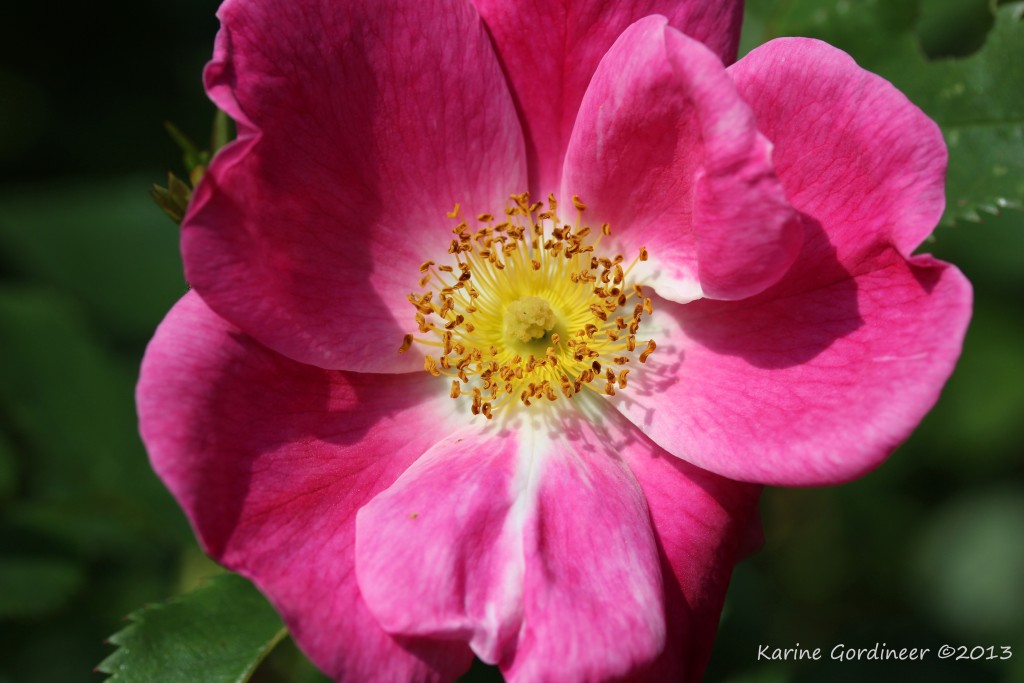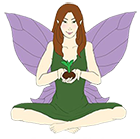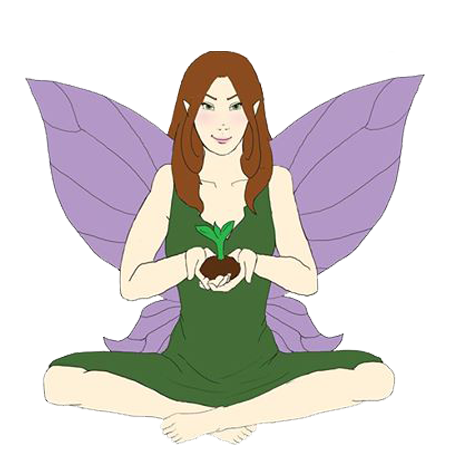Plant Communication. What does that phrase conjure up for you? Scientists gathered around in rooms full of plants hooked up to polygraph machines to measure the minutest of fluctuations? Your quirky Aunt Tilly who speaks to her houseplants? Or a weathered medicine woman performing mysterious rituals with strange brews made from powerful plant medicines? Plant Communication can involve all or none of these things and you’ll find that it can be as varied as the people doing it.
To help describe plant communication or plant consciousness let’s travel back to a time when humans were in awe of the natural world and acutely aware of their dependence upon her. Their senses weren’t dulled by daily sitting in front of a computer screen, TV, cell phone, or e-reader. The natural world was their constant home, their survival, and they were in touch with the tiniest of fluctuations in that environment. Native American, and other cultures living close to the Earth, recognized (and still do) that all of nature has a “spirit”, a consciousness, a personality even. This consciousness of nature was recognized in all beings, the stone people, the animals, the insects, the elements such as sky and fire as well as plants. These beings were understood as being equal to humans. No greater, no lesser but equal. A part of a whole organism that worked in harmony with each other. Each being had its own lesson to teach, its own “voice” or song, its own vibration, and each being was honored and treated with respect. It was understood that we as humans can interact with these beings of nature. Of course most often plants don’t speak in the way that humans do but have a language of their own. Many modern humans have forgotten this language and stopped communicating with nature but the connection is not completely lost. It is the language of the wind, the water, the falling leaves in autumn, the opening of the flower, the falling of the rain, the rays of the Sun as they touch the Earth. To those that have not lost this ability, nature is continuously engaged in communication. It speaks to a part of our spirits even though our minds don’t usually comprehend the message. It is the language of the Heart. For others it is possible to learn to hear these messages, to open to these communications, and truly it is time that humanity did listen, for nature has much to teach. Lessons of cooperation, of how to get along with one another, and even answers to many of the current challenges we face such as climate change and energy shortages. Nature is the greatest builder and innovator ever to exist and we would do well to listen to this wise teacher.
 As we spend more time in nature and most especially consciously in nature, we can tune into these plant energies and know things that science is just beginning to catch up with. This type of knowledge is a “knowing” that surpasses the mind and penetrates into the Heart and Spirit. When I was a child I spent much time in the woods and fields of my childhood home and the backyard of my grandmother’s house both of which were home to a few most beloved Maple Trees. I climbed those trees from the time I was a small child right up to my teenage years. In the spring and summer lazy afternoons were spent reading, daydreaming, and simply be-ing in the trees. Autumn, raking leaves into enormous piles to jump in. I always loved the different point of view of being up high and examining the tree bark and leaves up close. Trees were never inert things but were my friends and companions. I had a sense that the trees held me and not coincidentally they had broken several careless falls that could have been disasters. In those quiet moments with the trees I had a sense or a knowing of their presence. Within that presence, that energy, there was a communication. The trees spoke to me. I felt no need to share these conversations, but accepted them and they became part of the secret knowledge I carried inside of myself. I knew that once you were introduced to one tree that all the trees would know you. Most especially the trees of that particular species. Today, science speaks of the underground network of mycorrhizal fungi that helps the trees to communicate with one another even so much as warning of predators and sharing needed resources. I think soon they will discover that this network extends much further than previously thought and many other things they currently believe is not possible.
As we spend more time in nature and most especially consciously in nature, we can tune into these plant energies and know things that science is just beginning to catch up with. This type of knowledge is a “knowing” that surpasses the mind and penetrates into the Heart and Spirit. When I was a child I spent much time in the woods and fields of my childhood home and the backyard of my grandmother’s house both of which were home to a few most beloved Maple Trees. I climbed those trees from the time I was a small child right up to my teenage years. In the spring and summer lazy afternoons were spent reading, daydreaming, and simply be-ing in the trees. Autumn, raking leaves into enormous piles to jump in. I always loved the different point of view of being up high and examining the tree bark and leaves up close. Trees were never inert things but were my friends and companions. I had a sense that the trees held me and not coincidentally they had broken several careless falls that could have been disasters. In those quiet moments with the trees I had a sense or a knowing of their presence. Within that presence, that energy, there was a communication. The trees spoke to me. I felt no need to share these conversations, but accepted them and they became part of the secret knowledge I carried inside of myself. I knew that once you were introduced to one tree that all the trees would know you. Most especially the trees of that particular species. Today, science speaks of the underground network of mycorrhizal fungi that helps the trees to communicate with one another even so much as warning of predators and sharing needed resources. I think soon they will discover that this network extends much further than previously thought and many other things they currently believe is not possible.
This communication extended to plants as well. Many family photos show me as a young child engrossed in intently gazing at a plant or flower. I often had potted plants on my window and my dad and I grew enormous gardens from the time I was small. As an adult I found that I could often engage with a plant and know what its name was or what its uses were. This is a type of knowledge that must be experienced to be fully understood. Spending much of my life wandering throughout the natural world, getting lost in backwoods, obscure trails, and forgotten fields, has taught me more about our environment than any other resource. Spending days consciously focused on this energy I was able to feel the unconditional love that radiates from all of nature. That is a mind blowing experience. So palpable is the energy it is undeniable and defies mere words.
To me plant consciousness and plant communication are nearly one in the same. Once we become aware of how plants communicate, then we become aware when communication is happening. Plants communicate physically via hormones and reach out to humans via scent. Energetically they communicate through conscious energy which can be received as a knowing, a vision, or a dream. Likewise, we can open communication with plants and all of nature. We do this by moving out of the ego and into our heart space. Spending meditative, quiet time in nature will make us more receptive to their messages. One of the most important elements I find to plant communication is an open heart and a receptive mind. Once we believe we know everything about a particular topic or when our ego is engaged to the extent that we feel we “know it all” then we become unteachable. In the study of Zen Buddhism the idea is to practice having a “beginner’s mind”. A beginner’s mind is open and receptive, an empty cup. We’re not coming to the work with a cup that is already full but one that is empty and thirsting for knowledge and most especially experience. From that place of being, there are many techniques we can learn to help to open this channel and facilitate communication and healing. If you’d like to learn more about Plant Communication, sign up for the Green Girl email list to learn about upcoming classes and be sure to view the the Calendar on this website.
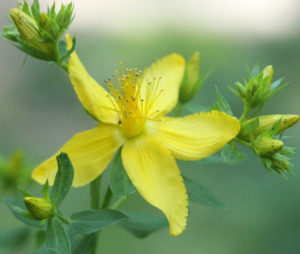 As you’ve probably already guessed from this website, I love plants. Medicinal plants have been a long time focus and calling although all plants are healing in their own wonderful and varied ways. This blog post has been a very long time coming. Its first stirrings began many years ago and came again while harvesting St. John’s Wort (Hypericum perforatum) flowers in the bright, warm, embracing sun in the summer of 2015. It had been a trying year full of unexpected changes as my mother had died suddenly in the very early and sleepy spring. Anyone that has experienced grief especially the raw grief that comes on abruptly unexpectedly leaving you breathless in an instant as all the oxygen in your universe is viciously sucked away in one soundless swoosh. My experience certainly didn’t pale in that regard. It left me feeling as tiny as a fish flopping around outside of its safe, natural borders into unchartered, foreign, and wholly un-supporting terrain.
As you’ve probably already guessed from this website, I love plants. Medicinal plants have been a long time focus and calling although all plants are healing in their own wonderful and varied ways. This blog post has been a very long time coming. Its first stirrings began many years ago and came again while harvesting St. John’s Wort (Hypericum perforatum) flowers in the bright, warm, embracing sun in the summer of 2015. It had been a trying year full of unexpected changes as my mother had died suddenly in the very early and sleepy spring. Anyone that has experienced grief especially the raw grief that comes on abruptly unexpectedly leaving you breathless in an instant as all the oxygen in your universe is viciously sucked away in one soundless swoosh. My experience certainly didn’t pale in that regard. It left me feeling as tiny as a fish flopping around outside of its safe, natural borders into unchartered, foreign, and wholly un-supporting terrain.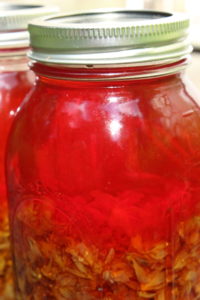 the plants, playing my flute, and harvesting the plant’s gifts. I especially found myself spending much time with St. John’s Wort, or St. Joan’s Wort as she prefers. On this particular day I was harvesting St. Joan’s Wort in the baking Sun to be made into a healing oil. It’s one of my favorite things to do. She has been one of my plant allies for several decades. Early on She drove away “seasonal blues” and calmed sciatica pain and sore muscles. Over the years I’ve had the privilege of sharing her medicine with so many people through classes and remedies from her bright yellow flowers that turn red when bruised or steeped in oil. Making St. Joan’s Wort oil and salve has become a catharsis for me, a rite of passage, and just one of the ways that I keep reconnecting with Her power year after year. The year my mother passed I found myself drawn to her over and over again. A strong drawing not out of balance but a gentle knowing that She was there waiting for me daily. I would seek Her out making flower essences, oils, solar infusions, and many times solely for the purpose of being in Her energy. This particular afternoon had been one of those moments that should be frozen for eternity the connection is so complete and profound that a timelessness drifts over like a summer breeze a completely welcoming surprise. As I bent to examine the bursting yellow blossoms it suddenly occurred to me that I was healing. I was working through the feelings surrounding my mother’s death one day at a time with the help of this absolutely amazing and powerful plant. I’d noticed over the months, that my energy and vitality were returning. At times I was even laughing and the deep and heavy sadness was lifting. In this beautiful, profound “ah ha” moment that burned deep in my soul I realized on an even deeper level that THIS is my medicine. This. All of it. Being in relationship with the plants, connecting, being on the Earth, harvesting in the way my ancestors have done for thousands of years. Simple, beautiful, and profound. This. This was my “medicine”, my power. I’ve been teaching about medicinal herbs and doing healing work for well over 30 years and yet there is always room to stretch farther, to go deeper.
the plants, playing my flute, and harvesting the plant’s gifts. I especially found myself spending much time with St. John’s Wort, or St. Joan’s Wort as she prefers. On this particular day I was harvesting St. Joan’s Wort in the baking Sun to be made into a healing oil. It’s one of my favorite things to do. She has been one of my plant allies for several decades. Early on She drove away “seasonal blues” and calmed sciatica pain and sore muscles. Over the years I’ve had the privilege of sharing her medicine with so many people through classes and remedies from her bright yellow flowers that turn red when bruised or steeped in oil. Making St. Joan’s Wort oil and salve has become a catharsis for me, a rite of passage, and just one of the ways that I keep reconnecting with Her power year after year. The year my mother passed I found myself drawn to her over and over again. A strong drawing not out of balance but a gentle knowing that She was there waiting for me daily. I would seek Her out making flower essences, oils, solar infusions, and many times solely for the purpose of being in Her energy. This particular afternoon had been one of those moments that should be frozen for eternity the connection is so complete and profound that a timelessness drifts over like a summer breeze a completely welcoming surprise. As I bent to examine the bursting yellow blossoms it suddenly occurred to me that I was healing. I was working through the feelings surrounding my mother’s death one day at a time with the help of this absolutely amazing and powerful plant. I’d noticed over the months, that my energy and vitality were returning. At times I was even laughing and the deep and heavy sadness was lifting. In this beautiful, profound “ah ha” moment that burned deep in my soul I realized on an even deeper level that THIS is my medicine. This. All of it. Being in relationship with the plants, connecting, being on the Earth, harvesting in the way my ancestors have done for thousands of years. Simple, beautiful, and profound. This. This was my “medicine”, my power. I’ve been teaching about medicinal herbs and doing healing work for well over 30 years and yet there is always room to stretch farther, to go deeper. 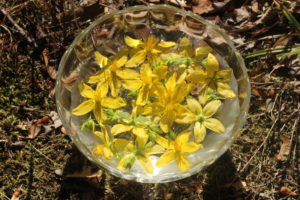 Even now I can feel Her roots working their way into my soul, into my Being. And I smile. This is the nature of the sacred medicine plants when we approach them with love, with gratitude, devoid of ego, and with an open heart. Bringing our whole selves with us; broken, bruised, and wounded. Or happy and joyous. It doesn’t matter. They react and relate to the authentic. To the real. To the childlike. To humility. To me it requires a complete giving over of the self and allowing oneself to be led. To be guided. Allowing yourself to “not know”. Letting it be okay to not have all the answers. That is where we become teachable. It is the place where the everyday and the sacred collide stretching on into eternity. This is where we embrace the Divine and in doing so we touch the sacred within ourselves. This is the place where we truly connect with the sacred medicine plants.
Even now I can feel Her roots working their way into my soul, into my Being. And I smile. This is the nature of the sacred medicine plants when we approach them with love, with gratitude, devoid of ego, and with an open heart. Bringing our whole selves with us; broken, bruised, and wounded. Or happy and joyous. It doesn’t matter. They react and relate to the authentic. To the real. To the childlike. To humility. To me it requires a complete giving over of the self and allowing oneself to be led. To be guided. Allowing yourself to “not know”. Letting it be okay to not have all the answers. That is where we become teachable. It is the place where the everyday and the sacred collide stretching on into eternity. This is where we embrace the Divine and in doing so we touch the sacred within ourselves. This is the place where we truly connect with the sacred medicine plants.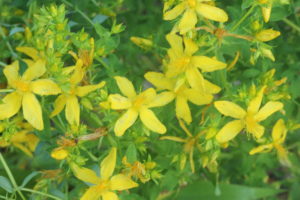
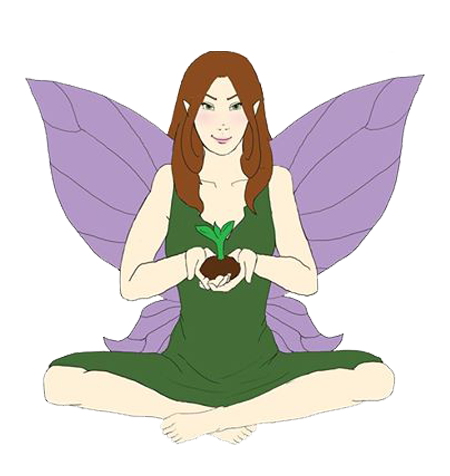
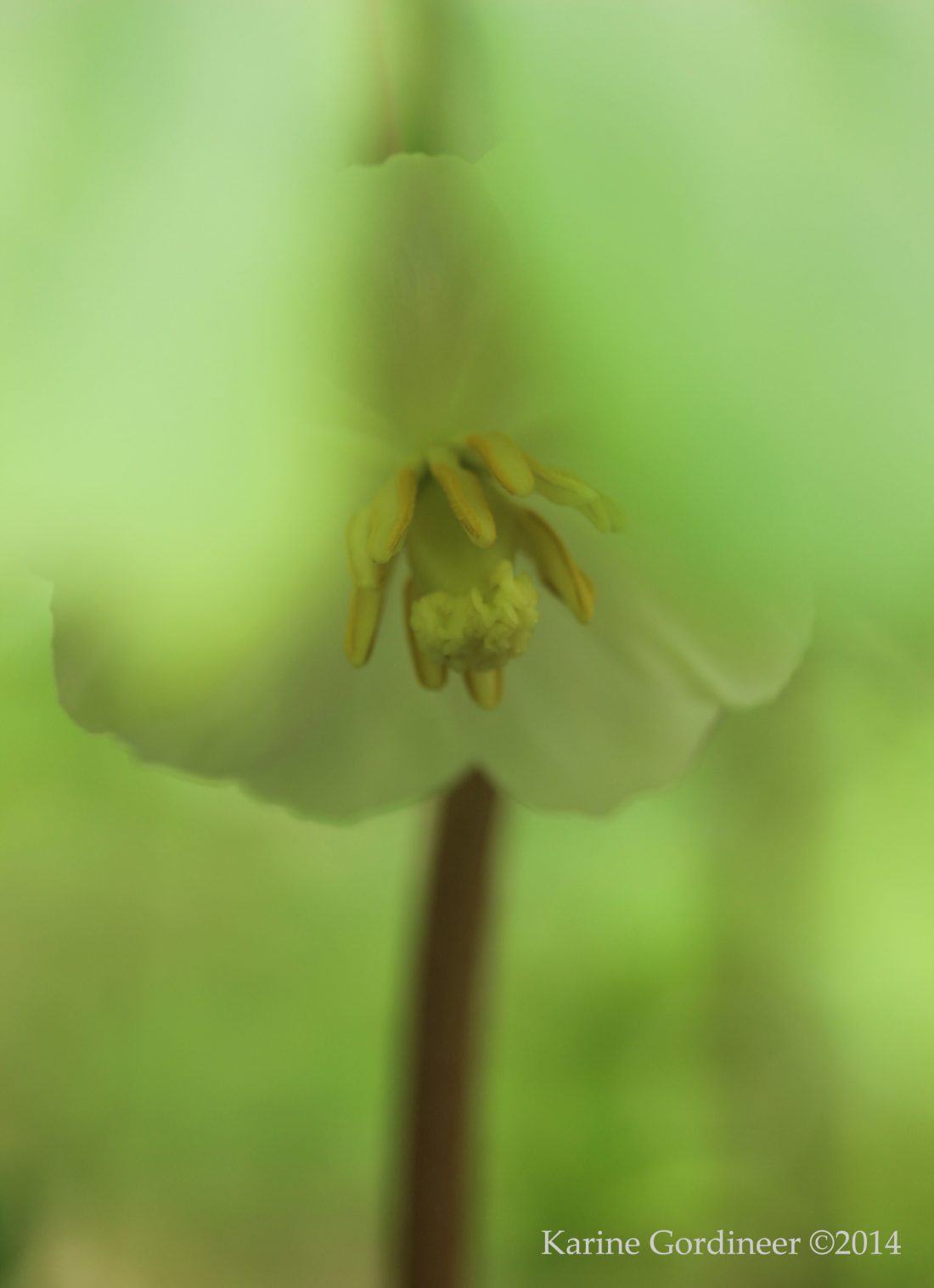
 As we spend more time in nature and most especially consciously in nature, we can tune into these plant energies and know things that science is just beginning to catch up with. This type of knowledge is a “knowing” that surpasses the mind and penetrates into the Heart and Spirit. When I was a child I spent much time in the woods and fields of my childhood home and the backyard of my grandmother’s house both of which were home to a few most beloved Maple Trees. I climbed those trees from the time I was a small child right up to my teenage years. In the spring and summer lazy afternoons were spent reading, daydreaming, and simply be-ing in the trees. Autumn, raking leaves into enormous piles to jump in. I always loved the different point of view of being up high and examining the tree bark and leaves up close. Trees were never inert things but were my friends and companions. I had a sense that the trees held me and not coincidentally they had broken several careless falls that could have been disasters. In those quiet moments with the trees I had a sense or a knowing of their presence. Within that presence, that energy, there was a communication. The trees spoke to me. I felt no need to share these conversations, but accepted them and they became part of the secret knowledge I carried inside of myself. I knew that once you were introduced to one tree that all the trees would know you. Most especially the trees of that particular species. Today, science speaks of the underground network of mycorrhizal fungi that helps the trees to communicate with one another even so much as warning of predators and sharing needed resources. I think soon they will discover that this network extends much further than previously thought and many other things they currently believe is not possible.
As we spend more time in nature and most especially consciously in nature, we can tune into these plant energies and know things that science is just beginning to catch up with. This type of knowledge is a “knowing” that surpasses the mind and penetrates into the Heart and Spirit. When I was a child I spent much time in the woods and fields of my childhood home and the backyard of my grandmother’s house both of which were home to a few most beloved Maple Trees. I climbed those trees from the time I was a small child right up to my teenage years. In the spring and summer lazy afternoons were spent reading, daydreaming, and simply be-ing in the trees. Autumn, raking leaves into enormous piles to jump in. I always loved the different point of view of being up high and examining the tree bark and leaves up close. Trees were never inert things but were my friends and companions. I had a sense that the trees held me and not coincidentally they had broken several careless falls that could have been disasters. In those quiet moments with the trees I had a sense or a knowing of their presence. Within that presence, that energy, there was a communication. The trees spoke to me. I felt no need to share these conversations, but accepted them and they became part of the secret knowledge I carried inside of myself. I knew that once you were introduced to one tree that all the trees would know you. Most especially the trees of that particular species. Today, science speaks of the underground network of mycorrhizal fungi that helps the trees to communicate with one another even so much as warning of predators and sharing needed resources. I think soon they will discover that this network extends much further than previously thought and many other things they currently believe is not possible.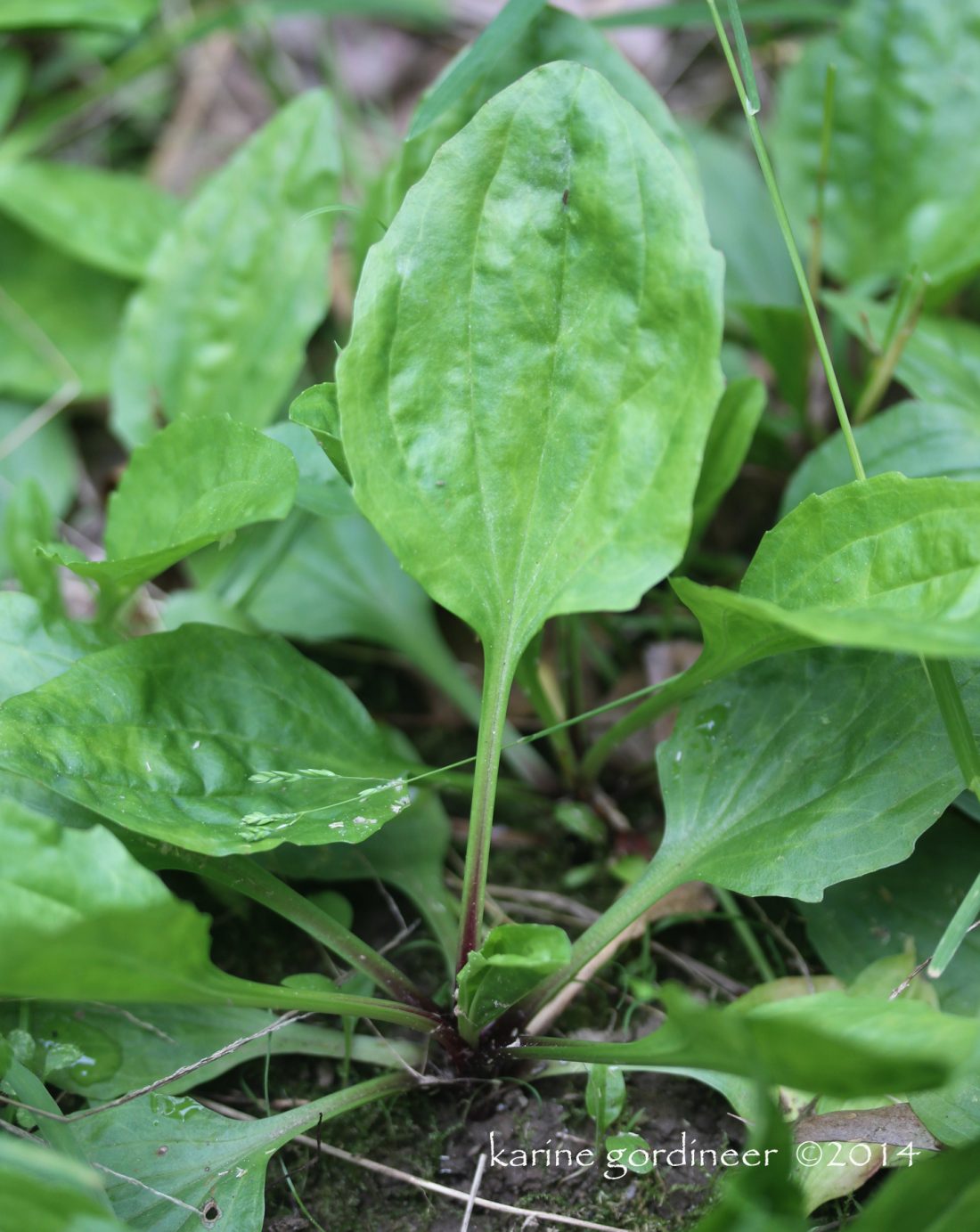
 If people knew that the cures for many of their ills were growing right in their own backyards, I’d like to think they would put down the glyphosate, the lawn mower, the “weed wacker”, and let it grow!
If people knew that the cures for many of their ills were growing right in their own backyards, I’d like to think they would put down the glyphosate, the lawn mower, the “weed wacker”, and let it grow! tain shines as a highly valued medicinal. Historically it has been used as a folk cancer remedy and is still used today in Latin America for this purpose. Its demulcent properties are soothing to the entire intestinal tract and are used to heal ulcers, indigestion, and IBS. The common constipation remedy psyllium comes from another species of Plantain, Plantago psyllium. Plantain is soothing, in fact, to all mucous membranes including throats, and lungs making it effective during colds and sore throats.
tain shines as a highly valued medicinal. Historically it has been used as a folk cancer remedy and is still used today in Latin America for this purpose. Its demulcent properties are soothing to the entire intestinal tract and are used to heal ulcers, indigestion, and IBS. The common constipation remedy psyllium comes from another species of Plantain, Plantago psyllium. Plantain is soothing, in fact, to all mucous membranes including throats, and lungs making it effective during colds and sore throats.